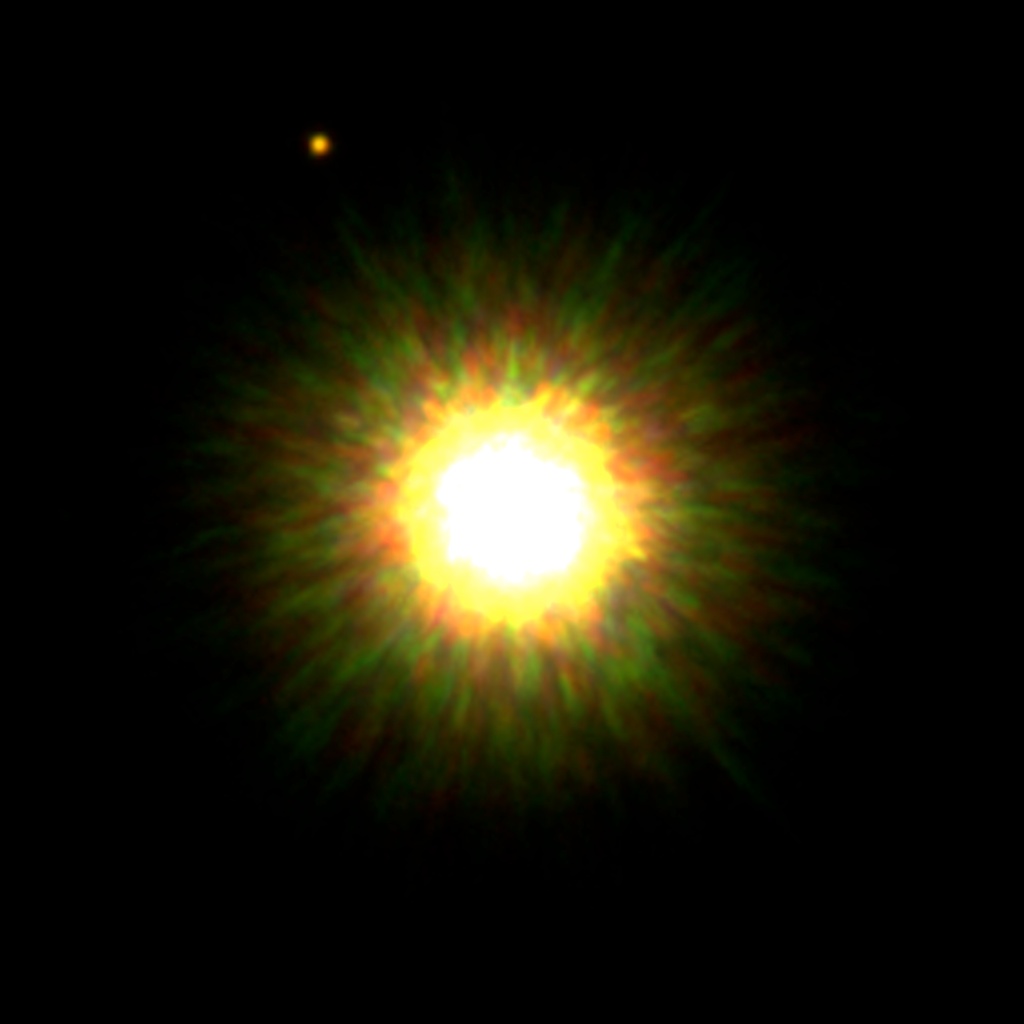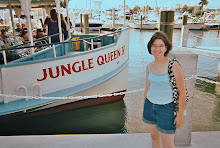 Binary Stars
Binary StarsA system of two stars that revolve around each other under their mutual gravitation.
A binary system would definitely make it an alien world since our solar system has only one star. Would it ever get dark on a planet with a binary star system? How would that affect the "people" living there? How would it affect the ecology of the planet? Definitely a challenge to write.

Red Dwarf
A small, old, relatively cool star; approximately 100 times the mass of Jupiter.
According to Nancy Y. Kiang in her article, "The Color of Plants on Other Worlds" in Scientific American she says, "that plants might need to be black to absorb all the available light."
I could easily imagine human colonists coming to a planet orbiting a star such as this and believing it to be a dead planet since plants on Earth are green.
 Super Giant Type F
Super Giant Type FAccording to Kiang this kind of star might give off to much light and "plants might get too much light and need to reflect much of it."
Don't forget your sunglasses. Perhaps the sunscreen as well. It might always be a good day at the beach on a planet like this. Anyone have any ideas on what kind of environment a star like this would create? Does a lot of light equal a lot of UV rays? My lack of science is a hindrance for me here.
 Young Type M star
Young Type M starAccording to Kiang "Young M stars fry planetary surfaces with ultra-violet flares, so any organisms must be aquatic."
This would be great for underwater colonies along the lines of the movie The Abyss. Although that's not about a colony it is still underwater. Perhaps the colonists don't fully understand about the radiation when first landing, there could be disbelievers about the dangers.
Another idea could be about the star aging and then it is safe for land colonies and people living underwater switch to living on land. Let's not forget all the cool underwater creatures that could exist. Sunblock SPF 200 recommended.
If you'd like to see some artist's rendition of alien plant life check out this slide show for ideas.
The importance of a sun: You cannot have a viable world without it. The planet's orbit around the sun determines how long a year is. For example, keeping it in the solar system, Mars. One Martian year is roughly two Earth years. Someone on Mars will never reach sixty years old without medical intervention, like longevity treatments. Making a year longer or shorter than an Earth year is one major way to make your world more alien.
Did you find this post helpful? Is any of my information incorrect? Thank you for reading.




2 comments:
It sounds like people living under a red dwarf would be in a permanent ice age. Maybe the colonists could be recruited from Inuit or Lapps? They'd probably have to import an entire ecosystem regardless of what type planet they settle. Any native live is almost certain to have different proteins, even if it's recognizable as living. It might be compatable, but they would not know that until later.
I'm kind of leaning towards a two star system but I'm going to see what kind of information I can find out about it before I commit.
A young class M star is interesting too. So that everyone is living underwater.
Thanks for posting on my blog.
Post a Comment